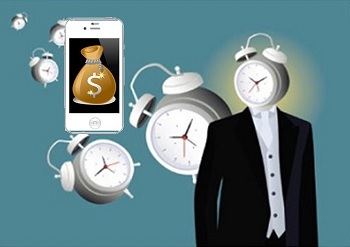The shipments of these mobiles devices on a global scale maintained Apple’s crown.
According to recent tablet commerce data issued by Strategy Analytics, the shipments of these mobile devices reached 76.8 million units last year, which was an increase of 20 percent over the 64 million units that had been shipped in 2012.
The Android operating system has been leading this marketplace with a clear dominance.
The data from Strategy Analytics showed that in terms of the share of operating systems in tablet commerce, Google’s Android was in the lead with a massive 62 percent. That said, Apple’s iOS had a 34 percent of the whole. That said, when it came to the individual mobile devices, Apple by far sold the largest number when compared to any other specific manufacturer.
Apple saw tablet commerce, last year, that was made up of the shipment of 26 million mobile devices.
Samsung came in second when it came to tablet sales, having shipped 13.6 million. In third place was Amazon, which sold 4.6 million. The next on this list were Asus (the manufacturer of the Nexus 7), which sold 3.6 million units, and then Lenovo with its 3 million, and Acer which had 1 million.
Among the products that drove Apple to the top of the list and made sure that consumers remained very interested in the tablets that it had to offer, were the iPad Air and the iPad mini with Retina display. These were credited by Strategy Analytics as having pushed its market share upward in the fourth quarter of last year by an additional 7 percent over where it had been in the third quarter. This turned around a two quarter streak of lost share.
Overall tablet commerce was very strong last year. It saw growth of 33 percent when compared to the year before, reaching 227 million units. The Strategy Analytics director of tablets and wearables, Matt Wilkins stated that “2013 was another extremely healthy year for the tablet market.” He added that while it was not a three digit increase, as had previously been seen, it remains considerable when keeping in mind that the market is now delivering more than 200 million units worldwide each year.
Apple’s CEO has placed the spotlight back on the ability to complete transactions with iOS devices.
Tim Cook, the chief executive at Apple, recently dropped some hints regarding a mobile payments strategy for the iPhone manufacturer, as well as for the use of the Touch ID feature that was recently added to their mobile devices.
Though this was clearly not an announcement, it was certainly a hint about things to come.
Cook linked the idea of mobile payments with the Touch ID system technology that is included in the latest smartphone releases from Apple. When he held a conference call with analysts, discussing the earnings of the company, he stated that this is sector “we’ve been intrigued with,” and added that “It was one of the thoughts behind Touch ID.”
The feature was unveiled as a security enhancement but could also provide mobile payments verification.
The TouchID until now has been meant for making it easy and convenient to unlock the iPhones without having to enter a password. That said, ever since it was first seen, there have been speculations made regarding its potential use for verifying an individual’s identity if the device is used for making a purchase.
That said, Apple has not yet given any other online merchants the opportunity to use the device for making verifications of purchases. It has also not provided access to the fingerprint scanner of Touch ID to third parties. Equally, it hasn’t provided third party access to the Secure Enclave verification computing resources from A7 for any other reasons.
During the conference call, Cook did say that there has been a positive response from the public to the existing form of Touch ID functionality. He expressed that Apple is seeing that people enjoy being able to use it for verification in order to make purchases from the iTunes store. He said that they have been watching people liking the opportunity to purchase content ranging from books to music and movies. His description of the purchases using Touch ID was “incredibly simple and easy and elegant.”
More specifically, he did go as far as to say that in terms of mobile payments, “It’s clear that there’s a lot of opportunity here.”



